Adding a Quality Sink Can Add Up On Your Bottom Line
Many homeowners are looking to fabricators to assist in the selection of the sink, providing those fabricators with an opportunity to demonstrate their expertise and steer the homeowner towards the sink that best complements the countertop. Whether providing the homeowner with a solid surface or stone countertop, it’s important to help them select a quality sink that is not only easy to install but will also make the countertop material "pop" and deliver years of consistent performance. In addition to contributing to visually stimulating kitchens, choosing quality sinks can help eliminate callbacks, increase word-of-mouth referrals and ultimately result in higher profit margins. One trendy choice among customers is the stainless steel sink as the finishing touch for a stone or solid surface countertop. Stainless steel offers a great match for any color or material and seems to always be in style. Because navigating through the many sink options can be a daunting task, the following tips offer a help fid guide for fabricators to select the right sink shape, style, and size for each unique installation.
[get_quote]
Superior Stainless Steel: Choose a Dependable Supplier/Manufacturer
Durability is of utmost importance with countertop installations, as customers expect their investment to literally last for years without replacement of any components. With that in mind, it is important to note that stainless steel as sink material does not crack, chip or discolor when compared to other materials, such as enameled cast iron and vitreous china. High-quality stainless steel sinks are generally constructed of 300+ Series stainless steel, which has a makeup that provides higher resistance to rust, and gives a bright and beautiful finish while minimizing corrosion. Another key factor is the thickness of the steel. Residential sinks usually range from 18 to 22 gauge, with the lower the gauge number, the thicker the steel and sturdier the sink.
Choosing a sink of thinner or low-quality stainless steel may affect the homeowner's satisfaction within the first six months, as the finish and sound will create noticeable deficiencies. To ensure satisfied customers, stainless steel sinks in 18 or 20 gauge are largely recommended for most applications. By selecting stainless steel sinks from reputable manufacturers that offer quality products constructed of the appropriate thickness and type with consistent material and dimensional integrity, fabricators can rest assured they are delivering a quality sink paired with their quality top.
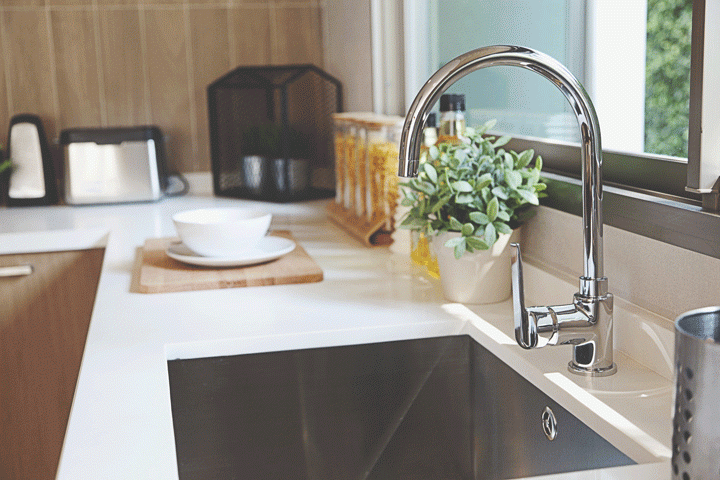
Quality Customer Service
Because choosing and installing the sink is often the last step of the project, it’s important to work with manufacturers offering on-time delivery with quality customer service to ensure a smooth, efficient process without costly delays. By working with manufacturers that have a variety of sinks in rock and readily available, dedicated, domestic customer service and local service and support, fabricators can have confidence that the sink will be there when they need it. It is also wise to consider manufacturers that offer long-term warranties to ensure customer satisfaction for years to come.
Undermount vs. Top-mount
After choosing the right manufacturer; the fabricator can help the homeowner choose between under-mount and top-mount sinks. This decision should be based on the countertop material, customer preference, and price. Both sink types have unique advantages, so it's important for fabricators to be able to explain the benefits of each option to the customer. Provide the homeowner with background on each type, such as how under-mount or recessed sinks are in railed under a countertop to create a seamless look. Also, under-mount sallow for easy cleaning as debris from the countertop can be simply brushed off the edge of the countertop and into the sink bowl without sink deck interference. Besides, as an under-mount is a permanent installation, quality is key when selecting the sink as it cannot be removed, typically, without potentially damaging the countertop.
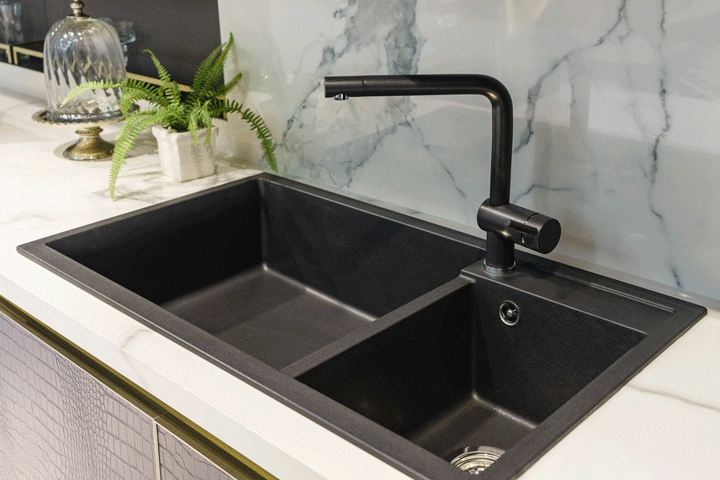
Another option to explain to customers is top-mount or drop-in sinks, which have rolled and finished edges. A key benefit to a drop-in sink style is that it can usually be replaced without dismantling or possibly destroying the original countertop, thus making remodeling easier down the road. Top-mount sinks are available in many standard sink base sizes, optimizing an existing cutout. Also, with soft countertop stone, such as marble, a top-mount sink can help protect countertop edges. Sharing tips and insights such as these helps to build the fabricator's reputation as an expert, and hopefully, increase referrals and profitability from repeat customers and increased job value.
Style, Size, and Depth
Like countertop, sinks combine form with function, so fabricators should guide homeowners to the appropriate style, size and depth for their needs. The first step is to determine the primary use of the sink. For example, will the customer use it for meal preparation, washing dishes or as a secondary sink for entertaining? Once armed with this information, the fabricator can assist in choosing a single-, double- or triple-bowl sink with the proper dimensions and depth.
Double-bowl sinks are the most common sink configuration as they increase efficiency for multiple users in the kitchen. Some double-bowl models feature a second bowl in a different size or depth that can either be specified for the left or right side, depending on the customer's preference. Single-bowl sinks, which continue to grow in popularity, can offer a more expansive work area for washing larger pots, pans and cooking sheets, while smaller single bowls can be used as a secondary prep sink in a bar area or kitchen island.
[get_quote]
Triple-bowl models usually have two larger bowls with one small bowl in the center, which often houses the garbage disposal. Triple-bowl sinks provide versatility in the kitchen by offering enough space for several people to perform different tasks around the sink together. In addition to determining how the sink will be used, fabricators should also discuss the amount of space it will occupy to choose the ideal model and properly set customer expectations. Most residential sinks range from 6 to 10in. in depth. The most common depth is 8 in., but the 10-in. depth models have increased in popularity in recent years. As with the style, the depth should be determined by the homeowner's preference and the function of the sink. Working with manufacturers who offer a wide variety of sink styles, sizes and depths make finding the right model for the customer a quick and easy process. Consumers should also be made aware of stainless steel sinks that do not have straight side walls and flat bottoms; these are signature features of sinks designed to protect delicate stemware and china, while providing maximum capacity.
Suppressing Sound
One feature that should not be overlooked when selecting a sink is sound suppression. Stainless steel sinks are available with insulation, which help to reduce noise during use. Most manufacturers offer sinks with different insulation options, such as a comprehensive under coating, sound absorbing pads, or both, to assure a quiet, relaxed experience and, thus, a satisfied customer.
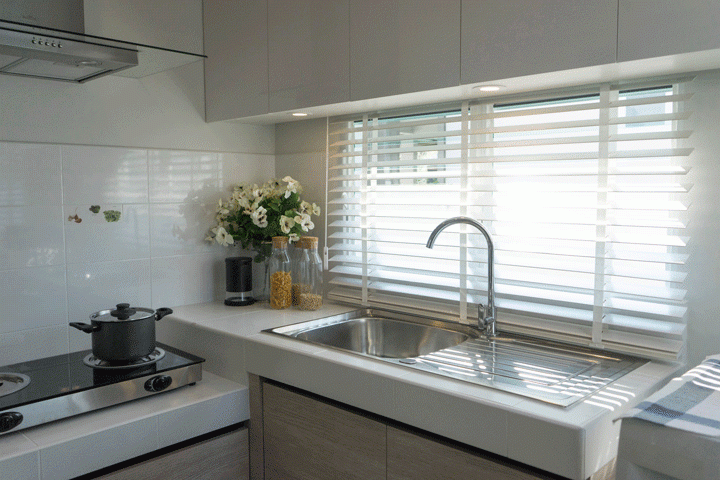
The Finishing Touch
For a lasting look, fabricators should guide homeowners to choose the proper finish. A sink with a durable, satin finish may offer timeless beauty, blending in scratches and any signs of use over time. A mirror or hammered finish sink, although attractive as a kitchen focal point, is only recommended for areas that encounter less activity, such as wet bars or butler's pantries. The appropriate finish ensures the sink will maintain its look throughout the countertops’ lifetime.
Accessories
After the homeowner chooses the sink style, an additional way to create a more satisfied customer and increase profits is to share accessory options. For example, some manufacturers offer accessories customized for each model, such as cutting boards that can be used over the bowls, bottom grids for protecting the sink and strainers. Designed to complement each model, these accessories complete the sink presentation and add to the overall look and feel of the kitchen, while also adding to the fabricator' profit on the job with incremental add-ons.
[get_quote]
Ease of Installation
When the sink and accessories are chosen, the fabricator can complete the project with installation of the sink. To simplify the installation, many fabricators choose sinks equipped with mounting hardware for added convenience. Most quality stainless steel sinks include countertop cutout templates and complete installation instructions to help fabricators install sinks quickly and easily, thus allowing the fabricator to move on to the next project and the satisfied homeowner to start using his or her new kitchen without delays.
Care and Cleaning
Share tips with the homeowner for day-to-day cleaning of the sink. For stainless steel, the best approach is to apply a mild dishwashing detergent with a soft sponge or fiber brush, rinse with clear water and wipe dry. Additionally, there are products on the market designed for cleaning stainless steel. It is important to note that chlorides, which are found in most soaps, detergents, bleaches, and cleansers, can be too aggressive for stainless steel; therefore, the sink should be thoroughly rinsed after cleaning. By sharing tips for proper care and cleaning with customers, fabricators can avoid callbacks and ensure customer satisfaction with a sink that maintains its quality throughout its life. Although kitchen sink styles continue to evolve, fabricators can provide insight to get the right sink. A homeowner's decision to upgrade to a higher quality sink creates an opportunity for the fabricator to provide the customer with the ideal product for his or her needs while creating a larger profit.










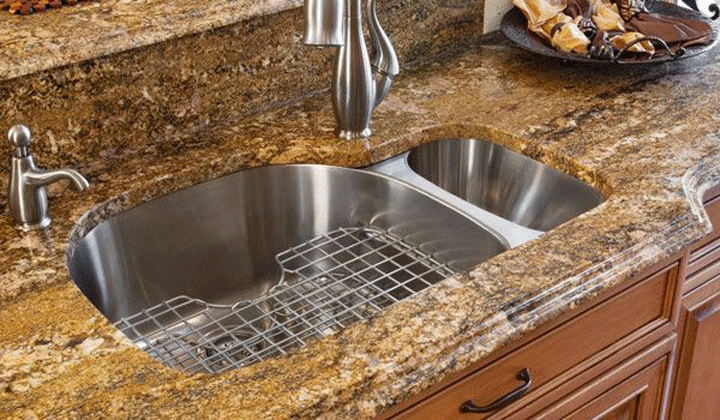



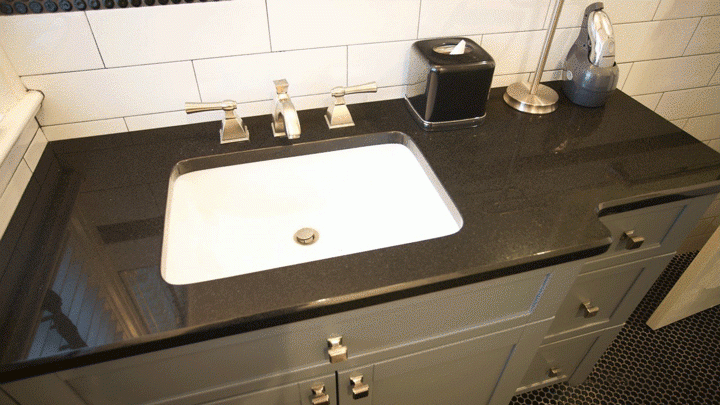


 The article helped me immensely
The article helped me immensely
 I’m now more informed on the subject
I’m now more informed on the subject
 I have questions about Marble.com
I have questions about Marble.com
 The article was not accurate at all
The article was not accurate at all
 There is a serious lack of information
There is a serious lack of information
 I have questions about Marble.com
I have questions about Marble.com